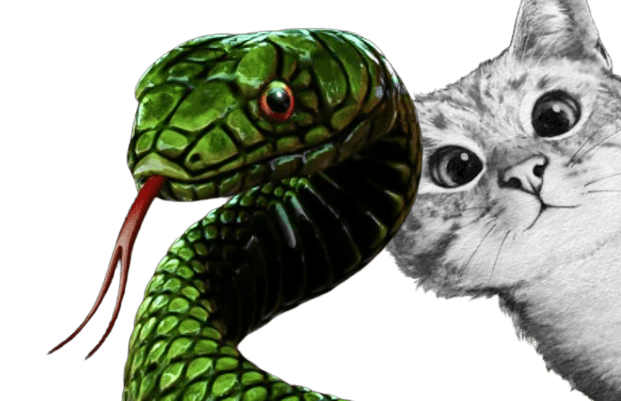Do cats have the quickest reflexes of all land-based mammals? The research on this topic it a little bit sketchy but strong anecdotal evidence does indeed point to the fact that cats have the quickest reflexes.
I’m going to rely at least partly on videos on TikTok showing cats attacking snakes. It allows me to compare the reaction times of snakes and cats. The reflex reaction times of snakes are well known and therefore there is more information on this topic in relation to snakes.
Snakes are known to be ‘speed demons’, a reference to their superfast reflexes. The Smithsonian Magazine reports that a rattlesnake scored the highest measured acceleration at 279 m/s squared. That’s very technical but according to accurate measurements, they found that a snake can lunge forward about 6 inches in 70 milliseconds (ms).
A contributor on the Reddit.com website (and I don’t know how knowledgeable they are) states that cats have the fastest reaction time of all animals at between 0-70 ms. They also state that when a person blinks that it takes about 0.1 seconds. 70 ms is 0.07 seconds, a fraction of the time that it takes a human to blink.
The average human reaction time is about 500 ms which is 0.5 seconds. The best that a human can achieve in terms of reaction time is about 200 ms (0.2 seconds).
On this basis, cats’ average reflex times are 10-15 times faster than those of humans. More importantly perhaps, is that they are faster than those of snakes.
When you look at the video on this page, you see the cat striking the snake. The snake reacts incredibly rapidly to bite the cat. The cat avoids being bitten because their reaction time is faster than the snake’s attack time.
On my assessment, cats have faster reaction times than snakes while snakes have known highly rapid reaction times.
The Smithsonian also state that mammals can react “anywhere between 60 and 395 ms. The nature.com website states that snakes strike with superspeed and can strike faster than mammalian prey. This is evolution which has ensured that the snake is able to attack faster than their prey can react and therefore they’re able to kill prey animals. The snake’s speed is their major weapon. They strike at a deadly speed but the domestic cat of all potential prey animals to the snake is able to avoid this lightning strike.
Turning, briefly, to the wild cat species, I can remember photographs of a sand cat, a diminutive wild cat species, successfully attacking and killing a snake. To the sand cat, the stake is a prey animal. They’ve turned the tables completely. This once again indicates that the cat reacts faster than the snake.

To the cat’s super-tuned reaction times we have to add in the fact that most of the cat’s voluntary muscles are ‘fast-twitch’. Dr. Fogle in his book Encyclopaedia of the Cat states: “The cat’s muscles mostly consist of fast-twitch fatiguing cells: they give the cat its speed and permit it to leap several times its own length in a single bound”.
The nervous system of the domestic cat and wild cats is very similar to that of humans. A cat’s rapid reaction time must be due to a combination of their highly attuned senses, the time it takes for a signal to be transmitted from their senses to their brain and thence to their muscles, and the rapid movement of their muscles to contract allowing them to bound out of the way.


